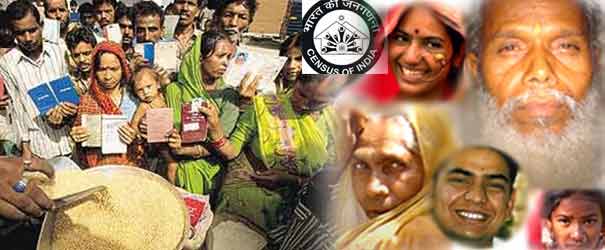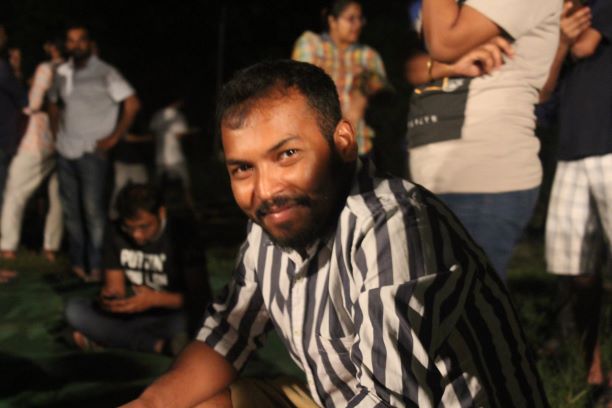Khalid Anis Ansari
In a recent piece Mr. Abusaleh Shariff (‘Casting the Caste Net’, Indian Express, 23 August 2010) has attempted an imaginative intervention in the debate around the caste census. While he enters the debate both in his ‘professional’ capacity as a renowned economist/demographer (to ‘discuss alternatives for collecting caste data’) and as a ‘communitarian’ (to ‘highlight implications for the Muslim community’), it is not really apparent which is having the upper hand in his articulation.
Also, when he indicates that ‘Muslims are considered a caste-less community’ it is not obvious which body of sociological knowledge he is alluding to and by whom are they considered so.This is moreover amazing given the fact that now organised lower caste Muslim movements, employing the trope of dalit-pasmanda, are quite conspicuous in the public sphere, at least in North India. With each passing day the hegemony of ashraf (upper caste) sections within Muslims is being increasingly interrogated by the ajlaf (shudra) and arzal (dalit) sections and the demands for democratisation within the community resonate louder than ever before.
But let me revert back to his main arguments first. To start with he advocates an ‘open-ended question method’ for the upcoming census wherein the informants’ response to their caste-names can be filled in and codified later. This will enable us to get the actual numbers for each caste. However, he posits that this method should be applied only for the OBCs and not for the SC/STs as updated codified lists are already available for the latter. He further casts doubts on whether such a method will be actually adopted for this census and speculates that the social, economic and educational data that the census would return may not be adequate for classifying any particular caste as backward or forward.
From there he moves on to reproduce well-rehearsed and much celebrated arguments in some circles against the methodological issues with the Mandal report (‘the absence of any dependable data’, ‘sketchy data from the 1931 census’ and so on and so forth) underplaying the fact that it is precisely this that constitutes the ground for the recent demand for a caste census. One can have a number of issues with his argument so far but what catches my attention is his suggestion: ‘I am of the opinion that using the OBC list during Census 2011 to identify the size and share of the OBCs will be highly problematic, and it will make devising inclusive policies difficult both at the national and state levels’. So is it really his discomfort with the Central OBC list informed by the Mandal Report which is the inspiration for this piece? Let us stay with his argument a bit longer.

Apart from his issues with the identification of OBCs on the basis of obsolete data by the Mandal Commission he has other substantive queries as well. It is indeed ‘puzzling’ for him ‘that as per the Mandal Commission the “OBC list” is considered a “class” category with little sociological, cultural or economic basis to designate it as such’. One is left wondering what he means here. If one unpacks this sentence carefully, then since the OBC list is really a list of castes, he is simply advancing his scepticism for this correspondence between ‘caste’ and ‘class’. But such displeasure, we all know, is not entirely novel. In striking contrast one can advance the arguments of the Kaka Kalelkar Commission, various state backward class commissions, a series of court judgements including the famous Indira Sawney judgment in which the judges unambiguously remarked: ‘A caste can be and quite often is a social class in India’. Indeed, even Ambedkar’s position is unequivocal in this respect: ‘[what] are called the backward classes are…nothing else but a collection of certain castes’ [Zwart, Frank De, ‘The Logic of Affirmative Action: Caste, Class and Quotas in India’, Acta Sociologica; 43; 235].
If the backward classes are nothing but a collection of certain castes in Ambedkar’s reading then what caste cluster can they be identified with? Obviously, it could be none other than the shudras as the extremes in the caste hierarchy, the upper castes (savarnas) and the dalits (avarnas), except for a few exceptional cases, hardly leave any scope for ambiguity. One only has to run through the literature on caste and acquaint oneself with the large number of official reports on this subject in order to appreciate the ‘sociological, cultural or economic basis’ for incorporating shudras in the OBC list as a ‘backward class’. If Mr. Shariff has some finer theoretical point in mind here around the category ‘class’ then I am simply unable to comprehend it and would readily stand corrected were he to explain that in any forum.
However, he certainly has a point when he puts his finger on the contested computation of both the Hindu and non-Hindu OBCs by the Mandal Commission and in suggesting that there are wide variations between the Central and State OBC lists. But then if such is the case then the remedy to the malady should be common for both the Hindu and Muslim OBC’s. It is here that he decides to leave the economist behind and begins to privilege the communitarian element in his articulation when he attempts a separate solution to the problem for Muslim OBC’s. He accurately maintains that these discrepancies in the lists will lead to an inflated figure for Muslim ‘high caste-class’ and therefore a majority of Muslims will be excluded from the ambit of affirmative action. He takes issues with Mandal Commission for maintaining that in Hindus upper-castes constitute only 25% of the population whereas for Muslims they constitute as much as 50%.
According to him this ‘is because none from among the Muslims are classified under the SC/ST category and all such Muslims with the SC/ ST identity are actually listed as high caste/class’. Now this is confusing to say the least because, apart from the obvious slip in the case of ST Muslims who are actually recognised, the Sachar Committee Report, in which he was interestingly a co-member, offers an argument in a diametrically opposite direction. According to the Sachar Report ‘By clubbing the arzals and the ajlafs among Muslims in an all encompassing OBC category, the Mandal Commission overlooked the disparity in the nature of deprivations that they faced’.
So while Mr. Shariff maintains that the higher percentage of upper castes within Muslims is because the dalit Muslims (which are not recognised as SCs) are clubbed with the upper caste Muslims, the Sachar Report on the contrary critiques the Mandal list for clubbing the dalit Muslims with the OBC Muslims. I am not sure if this is a factual error or whether the author has something else in his mind that eludes me. Obviously, such a high proportion of Muslim upper castes defies all sociological and historical wisdom (Mr. Shariff himself speculates that the proportion of upper castes would be only 20% of the Muslim population), but then the rationale for such figures cannot be the one that the author has advanced.
But where is he actually taking us? ‘It will be almost impossible to prepare a list of Muslim caste/class for classifying them as Muslim OBC’s’, he argues and then readily advocates the preparation of a ‘list of exclusion’ whereby those ‘who do not match the list of exclusion can be identified as ‘Muslim OBCs’’. Here we arrive at the full expression of OBC Muslim as a negative identity. Only those who fall outside the list of exclusion, an innovative device I would say, will be deemed as OBC Muslims and that OBC Muslims do not have any substantive reality of their own. How different is the tone and tenor in Ali Anwar’s articulation, MP (Rajya Sabha) and one of the leaders of the pasmanda movement, when he states: ‘Hum shuddar hain shuddar; Bharat ke moolnivasi hain. Baad mein musalman hain’ (We are Shudras first; we are the indigenous peoples of India. We are Muslims later). And, how is this list of exclusion to be prepared? The list is not to be prepared by the National Backward Classes Commission or by ‘using the information collected by Anthropological Survey of India under its People of India Project’ as the Sachar Committee advocates . Rather, it is to be prepared for each state ‘after consultations with state-level Muslim intellectuals and religious bodies’ which are, one could point out, thoroughly undemocratic and unrepresentative in character from the vantage point of lower caste Muslim articulation. Here the politics of location fully manifests itself.
Mr. Shariff makes two interesting moves in this piece. One, he delinks the question of Hindu OBCs with that of Muslim OBCs, and, two, he catapults the latter question into the orbit of Muslim communitarian politics and cumulative representation. If Muslim communitarian politics has so far worked for the interests of ashraf sections within Muslims then the majority of dalit-pasmanda Muslims will find his argument to be somewhat problematic.
Note: A previous version circulated by the Pasmanda Muslim Forum was an unedited first draft and was carried due to some confusion. Please note that this is the final version and therefore should be used for circulation or posting in any forum for purposes of a debate on the theme.
~~~
Khalid Anis Ansari is with The Patna Collective, New Delhi. He can be reached at khalidanisansari@gmail.com
Picture courtesy: the net.









